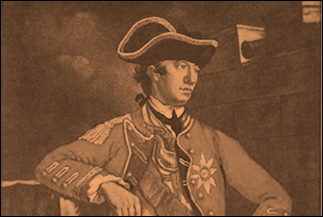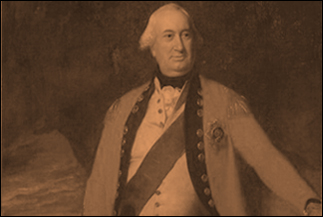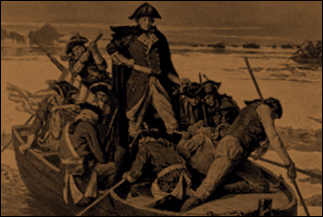Trying Times
To understand the depth of this accomplishment significance of these events it is important to understand the events leading up to
it.
The situation was dire. George Washington had been unsuccessful against the British. Morale was low and loss was exacerbated by the
poor living conditions Washington's troops had to endure. American soldiers enlisted in 30 day periods, after which many refused to reenlist.
Washington badly needed a victory to prove his army's hope of winning and thus boost morale. Washington himself expressed some doubts. He wrote to
his cousin in Virginia, "I think the game is pretty near up."
 General Sir William Howe
General Sir William Howe
 Sir
William Howe
Sir
William Howe
 General Lord Cornwallis
General Lord Cornwallis
 Washington Crossing the Delaware by Emanuel Leutze
Washington Crossing the Delaware by Emanuel Leutze
The Battle of New York and the New Jersey Campaign:
The New York and New Jersey campaign was a series of battles in the American Revolutionary War between British forces under General Sir William Howe and an American army under General George Washington. Beginning with the landing on Staten Island on July 3, 1776, British forces gained control of New York City and drove the Americans across New Jersey and into Pennsylvania. Late in 1776, Washington launched a surprise counterstrike, an
important morale boost for the Americans after an otherwise disastrous campaigning season.
"These are the times that try men's souls" - Thomas Paine
Capture Of New York
Having withdrawn from Boston after an unsuccessful campaign, the British now focused on capturing New York City. General Sir William Howe, with the
services of his brother, Admiral Lord Howe, began amassing troops on Staten Island in July 1776. General Washington, with a smaller army of about
19,000 men, was uncertain where the Howes intended to strike. He unwittingly violated a cardinal rule of warfare and divided his troops about
equally in the face of a stronger opponent. The Continental Army was split between Long Island and Manhattan, thus allowing the stronger British
forces to engage only one half of the smaller Continental Army at a time.
In late August, the British transported about 22,000 men (including 9,000 Hessians) to Long Island. In the Battle of Long Island on August 27, 1776, the British outflanked the American positions, driving the Americans back to the Brooklyn Heights fortifications. General Howe then began to lay siege to the works, but Washington skillfully managed a nighttime retreat through his unguarded rear across the East River to Manhattan Island.
Having taken Long Island, the British moved to seize Manhattan. On September 15, General Howe landed about 12,000 men on lower Manhattan, quickly taking control of New York City. The Americans withdrew to Harlem Heights, where they skirmished the next day, but held their ground.
When Howe moved to encircle Washington's army in October, the Americans again fell back, and a battle at White Plains was fought on October 28, 1776. Once more Washington retreated, but Howe, instead of aggressively pursuing the withdrawal, returned to Manhattan and captured Fort Washington in mid November, taking almost 3,000 prisoners. Four days later, Fort Lee, across the Hudson River from Fort Washington, was also taken.
The British gained control of New York harbor and the surrounding agricultural areas, and held New York City and Long Island until the war ended in 1783. The Americans had suffered significant casualties and lost important supplies, but Washington managed to withdraw the core of his army and avoided the decisive confrontation that could have ended the war.
Retreat across New Jersey
General Lord Cornwallis continued to chase Washington's army through New Jersey until the Americans withdrew across the Delaware River into Pennsylvania in early December. With the campaign at an apparent conclusion for the season, the British entered winter quarters. He controlled much of New York and New Jersey and was in a good position to resume operations in the spring, with the rebel capital of Philadelphia in striking distance.
The outlook of the Continental Army-and thus the revolution itself-was bleak. "These are the times that try men's souls," wrote Thomas Paine, who was with the army on the retreat. The army had dwindled to fewer than 5,000 men fit for duty and would be reduced to 1,400 after enlistments expired at the end of the year. Spirits were low, popular support was wavering, and Congress had abandoned Philadelphia in despair.
Emanuel Leutze's 1851 painting Washington Crossing the Delaware is an iconic image of American history.
Trying Times | NEXT: Preparation




